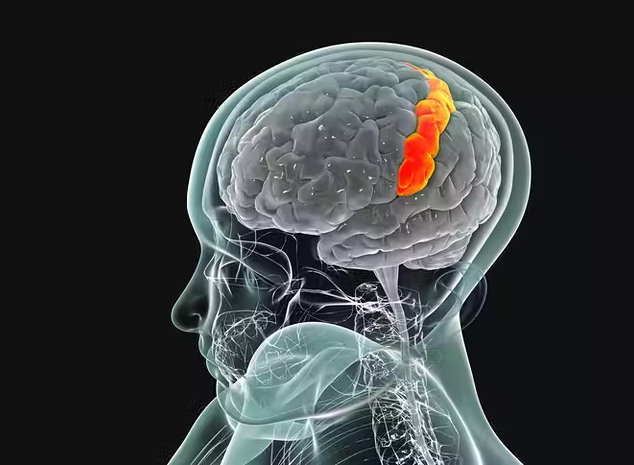HOW MINDFULNESS AND DANCE CAN STIMULATE A PART OF THE BRAIN THAT CAN IMPROVE MENTAL HEALTH
The somatosensory cortex forms a curve/arch across the brain from one ear to the other, like a thick velvet ribbon.
I fell in love with the brain as an undergraduate and pursued a career in neurology, but for years had largely ignored this structure since it seemed to be involved ‘only’ in processing bodily sensations. In my mind, that meant it wasn’t as exciting as the areas involved in emotion or higher cognition.
However, over the past decade, during my training in mindfulness-based interventions and dance therapy, I have come to realize that a well-functioning and developed somatosensory cortex can help us experience the world and ourselves more deeply and fully. It can enrich our emotional experience and improve our mental health.
For decades, the somatosensory cortex was thought to be responsible only for processing sensory information from different parts of the body. However, it has recently become clear that this structure is also involved in various stages of emotion processing, including their recognition, generation, and regulation.
In addition, structural and functional changes in the somatosensory cortex have been found in individuals diagnosed with depression, anxiety and psychotic disorders. These studies suggest that the somatosensory cortex may be a therapeutic target for certain mental health problems, as well as for preventive measures. Some researchers have even proposed neuromodulation of the somatosensory cortex with transcranial magnetic stimulation or deep brain stimulation.
But before we decide to use an invasive technology, we may want to consider interventions based on mindfulness, dance therapy, or other body-centered approaches to psychotherapy. These methods use the whole body to enhance awareness of sensation, breath and movement. These factors can enhance overall self-awareness, which contributes to improved mental health through possible reorganization of the somatosensory cortex.
Functional significance of the somatosensory cortex
One of the amazing properties of the somatosensory cortex is its remarkable plasticity, that is, its ability to reorganize and expand with practice or atrophy without it. This plasticity is critical when considering mindfulness-based interventions and dance therapy because, as mentioned above, through direct work with body sensations and movement, we can modify the somatosensory cortex.
Another important aspect is its numerous connections with other areas of the brain. In other words, the somatosensory cortex has the power to influence other areas of the brain, which in turn influence other areas and so on. The brain is highly interconnected and none of its parts act in isolation.
The somatosensory cortex receives information from the whole body, so the left part of the cortex processes information from the right side of the body and vice versa. Nevertheless, the proportion of cortex devoted to a particular body part depends on its functional importance rather than its physical size.
For example, a large proportion of the somatosensory cortex is devoted to our hands, so the movement and sensation of our hands can be an interesting dance therapy option for people with limited mobility.
The somatosensory cortex functions as a mediator of extra-perception (touch, pressure, temperature, pain, etc.), proprioception (postural and movement information) and introspection (sensations inside the body, often related to physiological states of the body, such as hunger and thirst). Of course, its role in introspective consciousness is only partial.
The somatosensory cortex and emotion
A scent, a song or an image can suddenly bring to mind a deeply buried and forgotten event. Likewise, feeling a texture, like cashmere, on our skin or moving our body in a certain way (bending back, rocking back and forth) can do the same and more. It can bring to the surface repressed memories, provoke emotional reactions and create changes in our state. This is one of the superpowers of mindfulness-based interventions and dance therapy.
The somatosensory cortex mediates this response, as does the auditory cortex for emotional and cognitive responses to a song, and the olfactory cortex for responses to smells. But if information stopped flowing at a purely sensory level (what we feel, hear, see, taste and smell), then a significant part of the emotional and cognitive implications would be lost.
Dance therapists and body-centered professionals have known, from the beginning of this field’s conception, the connection between posture/movement and emotion/cognition. Neuroscientists have now delineated, still roughly, the neural networks involved. For example, research shows a link between the development of our sensory sensitivity and the regulation of emotions.
Some evidence comes from studies of meditation and mindfulness-based interventions, which often include the practice of body scanning. More specifically, paying attention to body parts and physical sensations gradually. For example starting from the feet and ending at the head. Also, a meditation practice is to return to the bodily sensations as anchors.
Overall, studies show that people who practice body scanning and/or develop sensory awareness of the breath (feeling the breath traveling through the nostrils, throat, etc.) are less reactive and more resilient. This effect is, at least in part, mediated by the somatosensory cortex.
Clinical implications
Given the developing role of the somatosensory cortex in emotional and cognitive processing, it is not surprising that alterations in the structure and function of this brain region have been found in many mental health problems, including depression, bipolar disorder, and schizophrenia.
For example, reductions in cortical thickness and gray matter volume of the somatosensory cortex have been observed in subjects with major depressive disorder (particularly those with early onset) and bipolar disorder. In schizophrenia, lower levels of activity in the somatosensory cortex have been observed, particularly in unmedicated patients.
Activating the somatosensory cortex can help us connect with our bodies, develop sensitivity, sensuality and our ability to feel pleasure. So in this way, moving and dancing consciously and meditating with the whole body can help us regulate our emotions and connect with ourselves and the world more deeply and meaningfully.
Article from: https://theconversation.com/how-mindfulness-and-dance-can-stimulate-a-part-of-the-brain-that-can-improve-mental-health-184925




